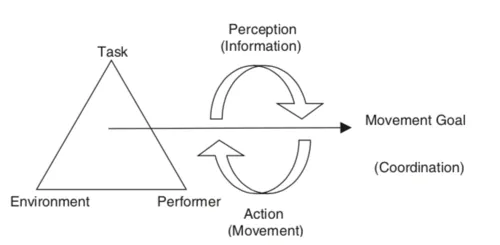Coordination emerges not from prescriptions for action but as a consequence of the constraints imposed on action – Newell’s Constraints Model (1986).
A struggling learner can be viewed as a system that is temporarily trapped in a stable attractor state that does not correspond well with a behavioral solution that would satisfy task demands. A strategy of perturbing the movement system may be necessary to help the learner to ‘let go’ of previous movement experiences. Techniques such as altering task constraints like rules, spaces, equipment and number of opponents should be treated as useful ways to induce movement variability and encourage exploration for alternative solutions. These ideas question the traditional concepts of repetition and breaking down of skills during practice to minimise movement variability. It should be acknowledged that the learner may need additional encouragement and reassurance at this important stage, as performance levels could fluctuate as a consequence of the motor reorganisation – (Button et al., 2005)


Rethinking movement pedagogy (in martial arts, for example), starting from the principle that perception and action are intertwined, so functional movements are called forth by what we perceive. \Therefore: don’t drill movements in isolation (because that omits perceiving the aspect of the situation that should bring them forth). Instead, practice them in as-realistic-as-feasible contexts. – david-chapman https://substack.com/@meaningness/note/c-87854189
This is very much how pedagogy in general should be, and there's no need to restrict it to movement.
Notes
- constrains restrict the possibility for action
- adding constrains help with the freedom problem by elimination solutions that will not work
- types
- environment
- task
- goal/rules/equipment
- very specific to context